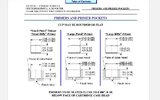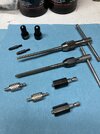EricBu
Member
- Joined
- Apr 2, 2021
- Messages
- 1,435
A customer brought me a partial box of 45 Colt high performance defensive boutique ammo and a Taurus revolver a few weeks ago. His issue was light striking primers, and he was concerned it was the gun, but wanted to have it checked before he bought more of this particular ammo, or sent his revolver back to Taurus. So I broke down a few rounds to see what they were about. It was apparent that the company was using Ginex primers after I decapped a couple of pieces I'd broken down. So I immediately busted out my calipers and checked the seating depth...because metric primers are often not seated deep enough. I thought, you know....this would be a good time to take some pictures in case there are folks out there who don't know how to measure primer depth. Slipped my mind until this morning, so here it is, better late than never. Of course, this is just one method, there's lots of other ways, some much more accurate, some less so. But almost all reloaders and handloaders have a dial caliper, and almost all dial calipers have a depth gauge...so this is likely a method that virtually everybody can use right away without additional expense.
Now, we know there are dozens of folks out there groaning...."you don't measure, you seat until they bottom out"....well, sadly those folks are wrong. Why? Because a metric primer "feels" bottomed out, when it isn't. "well, it just needs to be flush"....no, sorry, again....wrong. Depending on which reloading manual you own, the specification for primer depth is from .003 to .008. Myself, after 35 years of doing this, have determined that .003 is the absolute minimum depth to function reliably 100% of the time in all properly functioning firearms, but that's MY OPINION....most books seem to lean towards .004 to .005. Edited to add, the other reason to make a habit of QC'ng your ammo and checking primer depth...is when you get a piece of brass that's getting long in the tooth....you'll catch it here as well...you may see your primer seated .010 or even deeper...because the pocket has streatched or malformed. This is just as bad as not seating deep enough.
So back to the story...
This particular boutique ammo used Starline brass. New Starline brass can have relatively tight pockets, leading me even more to the conclusion the problem was seating depth. So I took a couple of pieces of brass I'd broken down and checked them out, then ultimately measured all of the rounds in the partial box. What I found:
Out of 10 rounds, 2 were .001 proud (above flush), 6 were .000, and 2 were .001 deep. None were within the specification above. How did we measure this?
1. The butt of your dial caliber has what's called a depth gauge. This is a slender metal rod that extends out the base of your caliper at the same measurement as the gap in your calipers. By butting it up against a primed piece of brass, you can extend that depth gauge, and get a reading how deep it is below the base of the caliper.
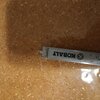
2. I like to push the mouth of the piece of brass up against a flat surface, I loosen the friction lock on the caliper, extend the depth gauge, line it up with the center of the primer, and push the caliper forward and take the reading.
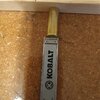
3. I usually rotate the brass and take the measurement several times. The overall all measuring process looks like the last pic below. You'll note that the measurement is .001, not deep enough. You want a reading of .003 minimum, deeper even depending on your gun. Only once you've measured primers and verified the depth, can you start looking at other things...a primer with too hard of a cup for your application, a gun with a problem, or a bad batch of primers. Relying on feel....then everything else is just a guess, unsubstantiated claim, or excuse.
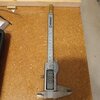
Hopefully this helps somebody out. I did this because I was working on the related task above and it was timely, and I don't know that I've ever seen anybody put pictures up on how to use the depth gauge on THR before.
So what happened with my customer? I called the ammo company, talked to one of their folks. They'd actually had another report from the same lot, and knew of the issue. I gave them my customers address and they shipped him two new boxes of ammo, and they functioned perfectly in his gun, and he was super happy, so I folded up my cape, put it away until next time...and had a celebratory ice cold adult beverage.
Now, we know there are dozens of folks out there groaning...."you don't measure, you seat until they bottom out"....well, sadly those folks are wrong. Why? Because a metric primer "feels" bottomed out, when it isn't. "well, it just needs to be flush"....no, sorry, again....wrong. Depending on which reloading manual you own, the specification for primer depth is from .003 to .008. Myself, after 35 years of doing this, have determined that .003 is the absolute minimum depth to function reliably 100% of the time in all properly functioning firearms, but that's MY OPINION....most books seem to lean towards .004 to .005. Edited to add, the other reason to make a habit of QC'ng your ammo and checking primer depth...is when you get a piece of brass that's getting long in the tooth....you'll catch it here as well...you may see your primer seated .010 or even deeper...because the pocket has streatched or malformed. This is just as bad as not seating deep enough.
So back to the story...
This particular boutique ammo used Starline brass. New Starline brass can have relatively tight pockets, leading me even more to the conclusion the problem was seating depth. So I took a couple of pieces of brass I'd broken down and checked them out, then ultimately measured all of the rounds in the partial box. What I found:
Out of 10 rounds, 2 were .001 proud (above flush), 6 were .000, and 2 were .001 deep. None were within the specification above. How did we measure this?
1. The butt of your dial caliber has what's called a depth gauge. This is a slender metal rod that extends out the base of your caliper at the same measurement as the gap in your calipers. By butting it up against a primed piece of brass, you can extend that depth gauge, and get a reading how deep it is below the base of the caliper.

2. I like to push the mouth of the piece of brass up against a flat surface, I loosen the friction lock on the caliper, extend the depth gauge, line it up with the center of the primer, and push the caliper forward and take the reading.

3. I usually rotate the brass and take the measurement several times. The overall all measuring process looks like the last pic below. You'll note that the measurement is .001, not deep enough. You want a reading of .003 minimum, deeper even depending on your gun. Only once you've measured primers and verified the depth, can you start looking at other things...a primer with too hard of a cup for your application, a gun with a problem, or a bad batch of primers. Relying on feel....then everything else is just a guess, unsubstantiated claim, or excuse.

Hopefully this helps somebody out. I did this because I was working on the related task above and it was timely, and I don't know that I've ever seen anybody put pictures up on how to use the depth gauge on THR before.
So what happened with my customer? I called the ammo company, talked to one of their folks. They'd actually had another report from the same lot, and knew of the issue. I gave them my customers address and they shipped him two new boxes of ammo, and they functioned perfectly in his gun, and he was super happy, so I folded up my cape, put it away until next time...and had a celebratory ice cold adult beverage.



